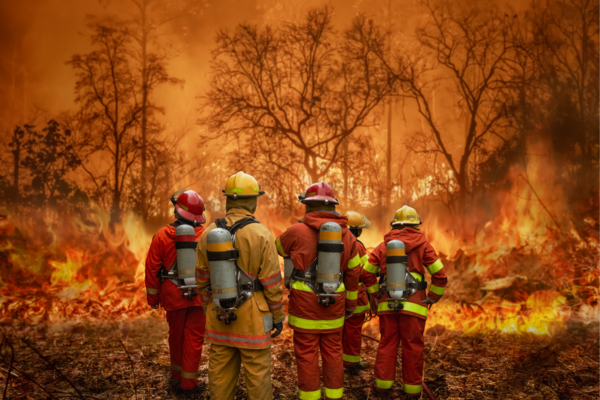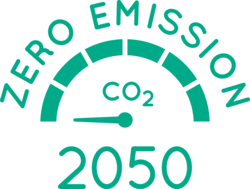
A heatwave refers to a phenomenon in which the surface temperature is relatively higher than normal and sustains longer than usual or the expected temperatures at certain times of the year. Heatwaves can even be accompanied by high humidity and may cause various issues such as environmental issues such as wildfires; economic impacts including crop failure; and health risks for the people living through it. Its impact is not limited to specific countries or regions, but targets almost every part of the world. According to a report[1] by Intergovernmental Panel on Climate Change (IPCC), heatwaves have occurred more frequently and last much longer since 1950, when global warming began to worsen. As if to meet such analysis, this year's heatwave has triggered an all-time impact around the world, breaking temperature records far beyond what climate model experts expected. Follow along with CAH, and look I nto the current status, causes, and governments’ responses toward these heatwaves.
Record-breaking Temperatures
On Saturday, 2 July, Tokyo, Japan, experienced surface temperatures above 35° Celsius (95 Fahrenheit) for eight days in a row, setting the hottest temperatures since 1875, when Japan started to keep records[2]. There too has been an unexpected news from the other side of the planet. Coningsby, England, experienced the highest surface temperature of all time on 19 July, recording 40.3° Celsius (105° Fahrenheit). Met Office[3] reported that it broke the previous highest record of 38.7° Celsius (101.7° Fahrenheit), by 1.5° Celsius from 2019.
Causes of Heatwaves
Global Warming Accelerated by Green House Gas Emissions
Many experts agree that greenhouse gas emissions are the main cause of temperature rise. Burning fossil fuels and excessive deforestation are the most well-known carbon-emission activities. Greenhouse gases create a greenhouse effect that captures heat within the planet from the Sun, slowly raising the average temperature of the Earth. Mariam Zachariah, a research associate at Imperial College London, claimed in a scientific report released on 28 July that the temperature the UK is experiencing now can be at least 16° Celsius (3.6° Fahrenheit) than that of a world without greenhouse gases[4].
The Double Jet Stream That Struck Europe
Some scientists sought for any chance of finding another clue to explain the extreme heatwave, especially in Europe. Fortunately, a team of researchers led by Dim Coumou, a climate scientist at Vrije Universiteit Amsterdam, suggested the jet stream as one potential explanation through a study in 2022[5]. A jet stream in the southern hemisphere is a rapid-paced stream of air circling the globe from west to east, which has a great impact on the climate of Europe. From time to time, a phenomenon called a double jet stream, in which the jet stream splits into two, occurs. This double jet stream has little impact on the world when it arises in winter, but it can turn into trouble in summer–which is the case for the United Kingdom this year. Normally, storm tracks from the North Atlantic cool Western Europe, but the double jet stream causes the heat to gather in Europe. The paper concluded that the double jet stream–which is occurring more frequently and for longer than in the past due to global warming–accounts for about 30% of the reason for the unusual amount of heat covering Europe. This study was appreciated for proposing an explanation for excessive heat that the prior climate models couldn’t predict.
Dry Soil Due to Consecutive Hot Days
Climate scientist Sonia Seneviratne of ETH Zurich explained how soil contributes to suppressing the heat in an interview with VOA News in July. When the soil is humid, the heat evaporates the water, diminishing to some extent; but in dry lands, the temperature rises further because it heats the air above the surface. Eventually, factors such as the double jet stream create a vicious cycle where the land dries up due to high temperature and dry land further heats the air. As a result, heatwaves in dry lands may cause disasters such as wildfires. This year a large fire broke out in France. On Monday, 25 July, an official from the South-west Gironde département described the two large wildfires as follows[6]: the two wildfires in La Teste-de-Buch[7] and Landiras[8] have burnt 7,000 hectares (17,300 acres) and 13,800 hectares, respectively.

International Responses to Alleviate Heatwaves
Alleviating global warming is the key to mitigating the impact of heatwaves. Sonia Seneviratne told CNN in July, "On average on land, heat extremes that would have happened once every ten years without human influence on the climate are now three times more frequent." Fortunately, many countries are attempting to curb global warming through various policies. The Biden administration announced a plan in March this year to invest $3.2 billion to increase energy efficiency in low-income communities and curb greenhouse gas emissions[9]. Meanwhile, in June 2021, the EU announced the European Climate Law, aiming to produce zero greenhouse gas by 2050. The policy consists of staged implementation of policies, such as increasing dependence on renewable energy by at least 55% by 2030 and enhancing the EU’s carbon sink, which is various forms of ecosystems that take in carbon from the atmosphere.

This year's heatwave in Europe has shown that the climate can change in unforeseen manners. Considering that it can cause disasters such as wildfires beyond simple heat, governments must come up with urgent measures. Accordingly, the EU and the United States have proposed a few movements, but more attention and immediate support are necessary as global warming is a multinational issue. Hence, more countries should cooperate to solve environmental problems, and developed countries should actively work to solve problems by supporting regions and countries that need help.
[1] Reported by NYT in July 2022.
[2] Rousi, E., Kornhuber, K., Beobide-Arsuaga, G. et al. Accelerated western European heatwave trends linked to more-persistent double jets over Eurasia. Nat Commun 13, 3851 (2022). https://doi.org/10.1038/s41467-022-31432-y
[3] Reported by The Guardian in July 2022.
[4] A commune in the Gironde department, New Aquitaine (administrative region). France’s administrative division is categorized as follows in the order of ascending size: commune, department, and region.
[5] A commune in the Gironde department in Nouvelle-Aquitaine
[6] Reported by The Washington Post in April 2022
[7] Reported by NYT in July 2022
[8] United Kingdom's national weather service
[9] "Summary for Policymakers", Climate Change 2021: The Physical Science Basis.

